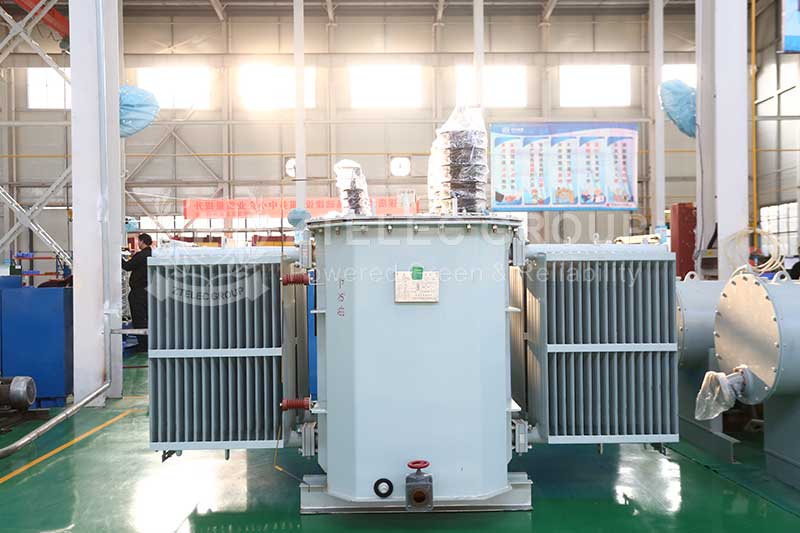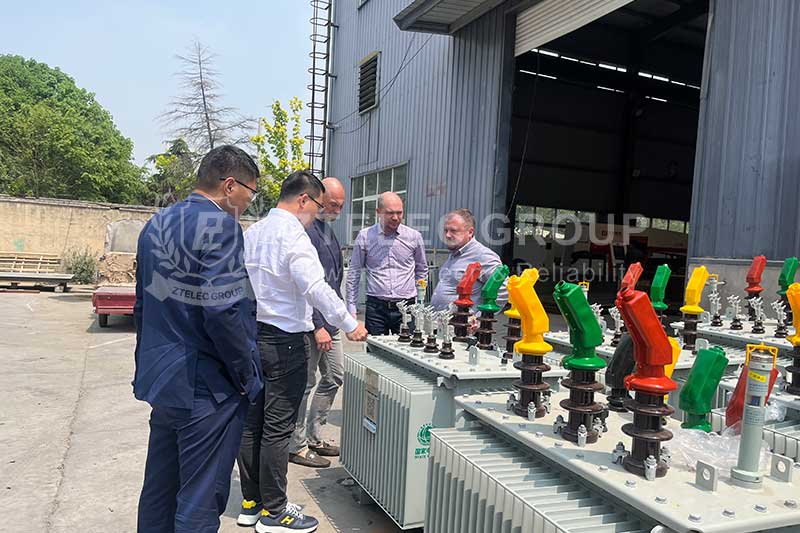What is partial discharge?
Partial discharge occurs inside insulation in assets such as a transformer, turbine generator, motor, switchgear or cable. Partial discharge occurs when one part of the insulation cannot withstand electric stress, so it flashes over. At that time, the gases are ionized and the voltage drops quickly. Then the current pulse equalizes the remaining charge in the remaining insulation. It’s a rapid process that negatively affects the asset’s life.

Why does partial discharge occur in a transformer?
Partial discharge refers to the discharge that occurs between electrodes but does not penetrate the electrodes. It is caused by weak points in the insulation of the equipment or defects left during the production process under the action of a high electric field, leading to repeated breakdown and extinction. The energy of this discharge is usually small and does not immediately affect the insulation strength of the transformer. Partial discharge may occur in voids in solid insulation, in bubbles in liquid insulation, between insulation layers with different dielectric properties, or at the edges or tips of metal surfaces.
The hazards of partial discharge
Although the energy of partial discharge is small and the time is short, its long-term existence will cause great damage to the insulation material. Partial discharge will cause the adjacent insulation material to be bombarded by discharge particles. At the same time, the generated heat, ozone, nitrogen oxides and other active gases will corrode the local insulation and eventually lead to thermal breakdown.
Partial discharge detection method
1. Ultrasonic detection method
The ultrasonic wave generated by partial discharge in transformer can be received by ultrasonic sensor fixed on the oil pillow wall of transformer, so as to detect the size and position of partial discharge. The ultrasonic sensor usually used is a piezoelectric sensor, and the frequency range of choice is 70-L50khz, in order to avoid the magnetic noise of the iron core and the mechanical vibration noise of the transformer.
2. Chemical detection method
When partial discharge occurs in the transformer, various insulating materials will be decomposed and destroyed, resulting in new products. By detecting the composition and concentration of the products, the state of partial discharge can be judged. At present, this method has been widely used in online fault diagnosis of transformers. The type of fault is different, the degree of fault is different, and the composition and concentration of gas are different, so the pattern recognition system can realize automatic fault recognition. But until now, there is still no unified judgment standard. Because it is sensitive to the detection of early latent faults, but can not reflect sudden faults.

3. Pulse current method
Pulse current method is used to detect impedance, transformer bushing grounding wire, shell grounding wire, iron core grounding wire and pulse current caused by partial discharge in the winding to obtain the actual discharge. It is one of the earliest and most widely used detection methods. International specialized agencies have also developed special standards for this, and the current sensor can be divided into narrowband and broadband two types according to the frequency band. The narrow-band sensor is generally about 10KHZ, which has the advantages of high sensitivity and strong anti-interference ability, but the output waveform is seriously deformed. The bandwidth of the wideband sensor is about I00KHZ, which has the advantage of high pulse resolution but low signal-to-noise ratio.
4. Radio frequency detection method
It takes the signal from the neutral point of the transformer. The measured signal frequency can reach 30MHZ, which greatly improves the measurement frequency of partial discharge. At the same time, the test system is easy to install, the detection equipment does not change the operation mode of the power system, and the total of three-phase partial discharge signals cannot be distinguished, and the signals are susceptible to external interference. However, with the development of digital filter technology, radio frequency detection method has been widely used in PD on-line detection.
5. Uhf partial discharge detection
Due to the shortcomings of traditional detection methods, a new detection method, UHF detection, has emerged. The ultra-high frequency (300-3000MHZ) electrical signal generated by the partial discharge of the transformer realizes the detection and positioning of the partial insulation discharge of the power transformer, and realizes the anti-interference. The main advantages of using UHF to detect partial discharge of transformer are as follows: first, the pulse energy of partial discharge is almost proportional to the frequency band width, when only considering the influence of the thermal noise of the detection element on the sensitivity, the overclocking wideband detection has a higher sensitivity; second, the study shows that the electromagnetic interference frequency generated by background, noise and corona in the air of transformer substation is generally very low, which can be effectively suppressed by broadband method and distinguished from partial discharge signal by narrow-frequency method. It can be seen that the properties and physical processes of partial discharge in real transformer insulation can be measured with a suitable UHF sensor.








Leave A Comment